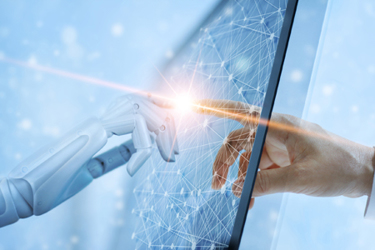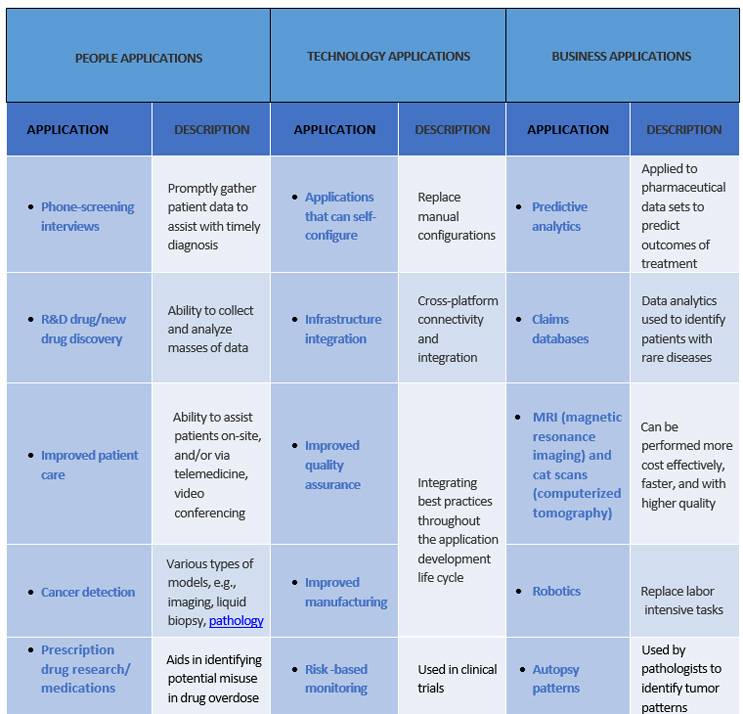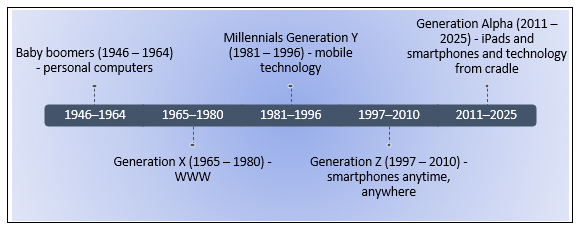AI & Intelligent Technologies: Finding The Right Fit For Your Pharma Or Medtech Company
By Kathleen Warner, Ph.D., RCM Technologies

2022 brings new and exciting technical intelligent solutions that address patient and product safety in real time. As we apply these technology solutions, sometimes referred to as the life sciences (LS) industrialization era, we need to understand the power of these solutions and new ways to address patient and product safety. Questions being asked and discussed are on standards for code/algorithms and government regulations, along with ethical and social responsibility to ensure these technologies are used appropriately and correctly. To avoid exposure to public criticism, it’s important to note that AI systems can be programmed to make mistakes, be biased, and are prone to computer predators (unauthorized users who break into computer systems with the intension of changing and/or destroying information). Note these technologies are not to be feared and avoided; rather, they should be embraced and included in the disruptive technologies and internet of things (IoT) strategy and framework.
This article takes a closer look at intelligent technologies and what we can expect to tackle in 2022 and beyond. It discusses how AI and intelligent technologies are being used in the LS (i.e., biotech, medical devices, and pharma) and healthcare industries, identifies some of the new concerns and challenges with disruptive technologies and risk management, and discusses a technology and generation timeline.
As we experienced in the past, standards bodies can be both positive and negative; however, they are necessary. Some countries have developed and published standards around data protection (U.K.), and others are addressing ethical principles and standards of conduct in their code of ethics for AI (Russia). With AI and ML standards come assurances that these technologies will be used in a positive, non-biased way to improve patient and product safety and advance computer machine learning. However, there is an argument brewing around the need for global standards for AI and ML. We can learn from the past; the World Wide Web (W3C) global consortium helped to pave the way forward with the internet and addressed some of the same questions regarding ethical and social responsibility in addition to principles and standards.
Categories Of Technology Risk
In a recent risk study with top executives, 72% indicated that complex, interconnected new risks are emerging faster than ever. Categories of risk included:
- Disruptive technology risk: 58% surveyed indicated that disruptive technology risk has a bigger impact now than in the prior two years.
- Data security and breaches: 55% surveyed indicated that data breaches are bigger and a more complicated threat to business.
- Operational risks: 52% surveyed indicated operational risk — a traditional but ever-present threat – as a concern. Other examples of operational risk (not part of the risk study) include human and technical errors, intentional fraud, and uncontrollable factors (i.e., heredity, age, etc.), and workflow gaps.
Some of the biggest risks to disruptive innovation and technology in 2020 were:
- Compliance and legal violations —This covers risks regarding privacy and protection of consumer data in the cloud. Companies need to stay current with data protection laws both in the U.K. (GDPR) and U.S. (HIPAA). Employees, partners, consultants, and customers all want to know that their data is protected.
- Data breaches – As referenced above, data breach incidents can be mitigated by having policies, procedures, and processes that address the incidents head on or before they happen. Refer to additional information on the cost of data breaches here.
- User privacy — Companies need to be able to protect PII (personally identifiable information) and keep it out of the hands of hostile actors.
- Fairness and equity – As discussed earlier, ML is very important to new ways of learning but only if human biases are omitted and the models and data sets are also free from bias.
- Reputational risk – AI chatbot is one example where the bot’s interactions with other social media can cause embarrassment to the company, resulting in the removal of the chatbot and spinning the company into damage control
- Spoofed chatbots — These are chatbots appearing to be a legitimate business in an app store. Once downloaded, the chatbot may access the company’s data.
- Ethical and legal concerns – As mentioned above, identify the need for principles and standards to ensure patient and product safety and to address difficult ethical questions.
- IoT – With greater and more complex devices connected to the IoT by 2022 (including smartphones, GPS, and smart appliances), the IoT is wide open to new attacks in the billions.
- Public safety – To prevent breaches of the IoT and manage public infrastructure, physical security and cybersecurity are essential.
Disruptive innovation and technology risks are global and not limited to the life sciences or healthcare. To name a few, governments, armed forces, financial businesses, etc. are all dealing with ways to manage and prepare for new disruptive technologies, data breaches, and operational risks. The risks are very real, and attackers, hackers, and intruders are only steps behind as they continue to gain ground using disruptive technology for all the wrong reasons. Refer to the Spotlight on Technology Risk report for a deeper look at risk and resilience to risk.
How AL And ML Are Being Used In LS And Healthcare
AI and ML are transforming the way we explore, develop, comprehend, communicate, and collaborate. With the emergence of disruptive innovations, the LS (i.e., biotech, medical devices, and pharma) and healthcare industries’ scientists and statisticians can research gigabytes to terabytes (i.e., measurement of binary data) of data sets associated with medical treatments and medical solutions. For example, in a recent BBC study, “AI technology was superior at spotting breast cancer in patients and had a 1.2% lower number of false positive diagnoses. This is very promising data indeed and a trend that will likely continue over time.”
Table 1: Utilizing AI and ML Technologies in Life Sciences provides several current use cases using intelligent technologies across three categories: people, technology, and business.

Table 1: Utilizing AI and ML Technologies in Life Sciences
AI Early Adopters: Pharma, Collaborators, Healthcare, & Startups
Some of the early adopters, including pharmaceuticals and their collaborators, are already using AI and ML to develop AI and ML tools that can be used to advance intelligent science, technology, and medicine: AbbVie, Amgen, Gilead Sciences, GlaxoSmithKline, Johnson & Johnson, Merck & Co., Novartis, Pfizer, Roche, and Sanofi.
Other noteworthy AI startup healthcare companies with specific focuses and purposes are bringing to market new and innovative ways of improving the patient’s experience, extending human intelligence, addressing patient risk, and providing data integrity through enhanced operational requirements.
Conclusion
This article identified several examples of how AI and intelligent technologies are transforming the world of life sciences and healthcare. As members of Gen Z mature, they are synonymous with automating everything, everywhere technology. They have an innate ability to develop tech-driven solutions on their own and are comfortable with new programming languages (Python), as well as AI and ML. What we’ve learned from the past generations in technology to what we know now raises the question: Could the technology advances made by Gen Alpha lead to the next computer science phenomenon of all time?
Figure 1: Flashback-Technology Generations provides a chronological look at the past four generations of technology and where the fifth generation Alphas of technology will lead.

Figure 1: Flashback -Technology Generations
Gen Alphas’ future will be surrounded by current and new disruptive technologies: leading examples include AI, blockchain (see Bitcoin and how banking is being disrupted), 3D printing, virtual reality (VR)/augmented reality (AR), robotics, and the IoT. Let’s track the progress of the Gen Zs and Gen Alphas, the application of intelligent technologies, and the adoption of these technologies by LS and healthcare. By discovering and developing real-world solutions, enabled through disruptive technologies, we can treat, cure, and/or prevent diseases. Technological utopia becomes an attainable goal for all.
About The Author:
 Kathleen Warner, Ph.D., VP of consulting services for RCM IT and Life Sciences, is an executive consultant with 25+ years of experience in information technology (IT) and the life sciences. She has served as a chief information officer, subject matter expert, and domain expert in regulated environments. As a management consultant, Warner has provided oversight for hundreds of life science projects both in the U.S. and globally. Her strengths include leadership, advisory, organization change management, business process analyses, and program/project management engagements. As a practitioner and technologist, Warner has performed future cloud assessments and delivered transformation program services to IT, R&D, and quality.
Kathleen Warner, Ph.D., VP of consulting services for RCM IT and Life Sciences, is an executive consultant with 25+ years of experience in information technology (IT) and the life sciences. She has served as a chief information officer, subject matter expert, and domain expert in regulated environments. As a management consultant, Warner has provided oversight for hundreds of life science projects both in the U.S. and globally. Her strengths include leadership, advisory, organization change management, business process analyses, and program/project management engagements. As a practitioner and technologist, Warner has performed future cloud assessments and delivered transformation program services to IT, R&D, and quality.
